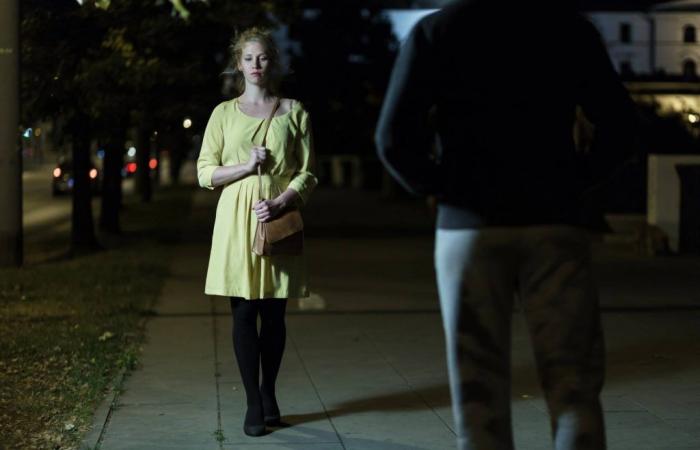
A woman who is attacked heavily by a man on public transport at rush hour; another who, in the street, makes outrageous sexist remarks in front of passers-by… In all these sadly banal cases, why do witnesses to the scene not or rarely intervene?
Blame it on the spectator effect, which inhibits our ability to act when several of us witness a scene that requires intervention.
For 20 years, teacher-researcher Peggy Chekroun, director of the social psychology of behavior and cognition team at Paris-Nanterre University, has been studying this phenomenon, supported by a scientific experiment carried out in 1968 by American scientists in reaction to a bloody news item.
On the night of March 13, 1964, Kitty Genovese, a waitress in New York, was raped and stabbed to death at the foot of her building. At New-York Timesthe police will indicate that they have the names of 38 witnesses who witnessed the scene without moving a finger.
Decryption of a process, still relevant today.
What does the experiment carried out in reaction to this news item highlight?
Researchers Bibb Latané and John Darley brought participants into a laboratory to communicate using contemporary means of communication (a headset and a microphone) in separate boxes.
The experiment then consisted of varying the number of “participants”. Among them, there was in reality only one real participant and accomplices, recruited for the experiment, who exchanged remotely. The discussion was sometimes between two, three or six people.
“When there are several witnesses to an attack, discomfort or a simple problem, we will be less inclined to help,” Peggy Chekroun
After a while, one of the fake participants, who had initially presented himself as suffering from epilepsy, feigned discomfort.
The objective of the experiment was to measure what the only real participant was going to do: get out of his box to try to intervene or not? If yes, after how long?
Experience has shown that the larger the control group, the less the participant intervenes and the longer the time to intervene.
It highlights that, when there are several witnesses to an attack, discomfort or a simple problem, we will be less inclined to help.
What are the psychological processes that lead us not to intervene?
The first is the diffusion of responsibility. When there are many of us present at a scene where we need to help, the responsibility that falls on each person is less than when we are the only witness. When I’m alone, this responsibility falls 100% on me. When there are two of us, it becomes 50-50.
Other factors have been highlighted, such as basic social influence. Often, emergency situations are a bit ambiguous and witnesses may wonder: is this really an emergency? Is this the best way to intervene? Is this an assault or just a couple arguing? Because in the latter case, social norms tell us that it is not up to us to intervene.
“In ambiguous situations, we will tend to look at the reactions of others,” Peggy Chekroun
In ambiguous situations, we will tend to look at the reactions of others. But what we don’t think about at that moment is that others have the same psychological mechanisms as us and therefore do the same thing. Hence this period of time where nothing happens, which becomes longer and longer the more there are of us.
Is knowing how our brain works enough to be able to bypass it to act as a witness?
It’s not really supported. A study, carried out a few years ago, involved bringing people into a lab to explain the bystander effect to them. At the end, in the elevator, someone dropped their things and people did not make the connection with what they had just learned and took so long to intervene.
As someone who has been working on this phenomenon for over 20 years, I nevertheless happen to experience it personally. After a few seconds, I realize it. Being aware of this can lead to breaking vicious circles more quickly but, initially, this is not enough to avoid it.
Are there ways to bypass the bystander effect?
What can break it is feeling responsible, capable: if someone falls and hurts themselves in the street in front of me and I have a first aid diploma; If I see someone having a bag snatched and I’m an off-duty police officer… I then feel more justified in intervening.
In the case of sexist or sexual outrages or attacks in public spaces, unfortunately, the key lies very much with the victim. Because the spectator effect is fueled by the ambiguity of the situation. When this is broken, the spectator effect is short-circuited. You should therefore not hesitate to call for help, or even explicitly point the finger at someone by saying “come help me!”even if it’s embarrassing.
“When we give the keys, when we explain to people that it is their responsibility to act, it can work,” Peggy Chekroun
But providing information on these mechanisms is important for raising awareness. Just like training people to understand that an emergency situation is urgent. A few years ago, a government campaign explicitly said: “if you hear strange cries from your neighbors, do not hesitate to call this number”. This helps cut off this spectator effect which consists of saying: “I’m not going to get involved in what’s happening with my neighbors.”
When we give the keys, when we explain to people that it is their responsibility to act, it can work. This is the responsibility of public authorities, the media, awareness campaigns… When you hear a woman raising her voice on public transport or trying to move away, yes, it is very probably because she is victim of an attack. And yes, you have to help him. We must try as much as possible to remove all these cognitive obstacles.
Are there cognitive profiles more likely to help?
No consolidated study proves this. Research shows that women are less subject to the bystander effect because they are more empathetic; others, conversely, that it would be men. Overall, there is no profile of people who help and others who do not help, no reliable data exists on this subject.
What we know is that people who have a particular social role due to their function, their training or their profession, feel more competent and therefore responsible to act.





